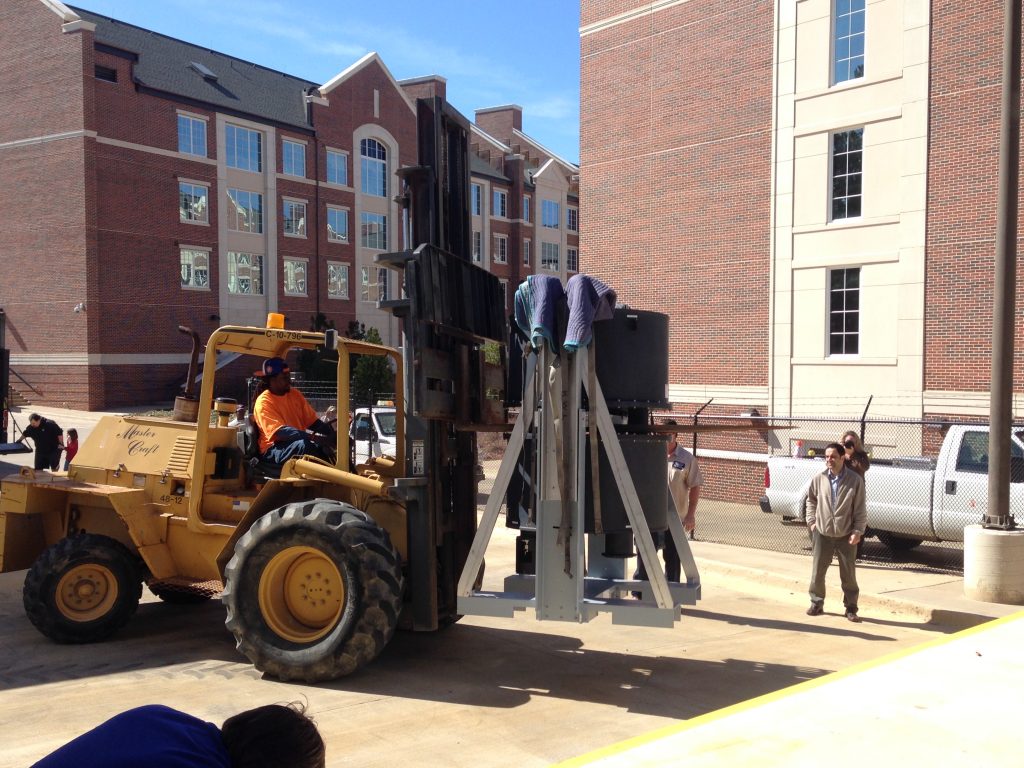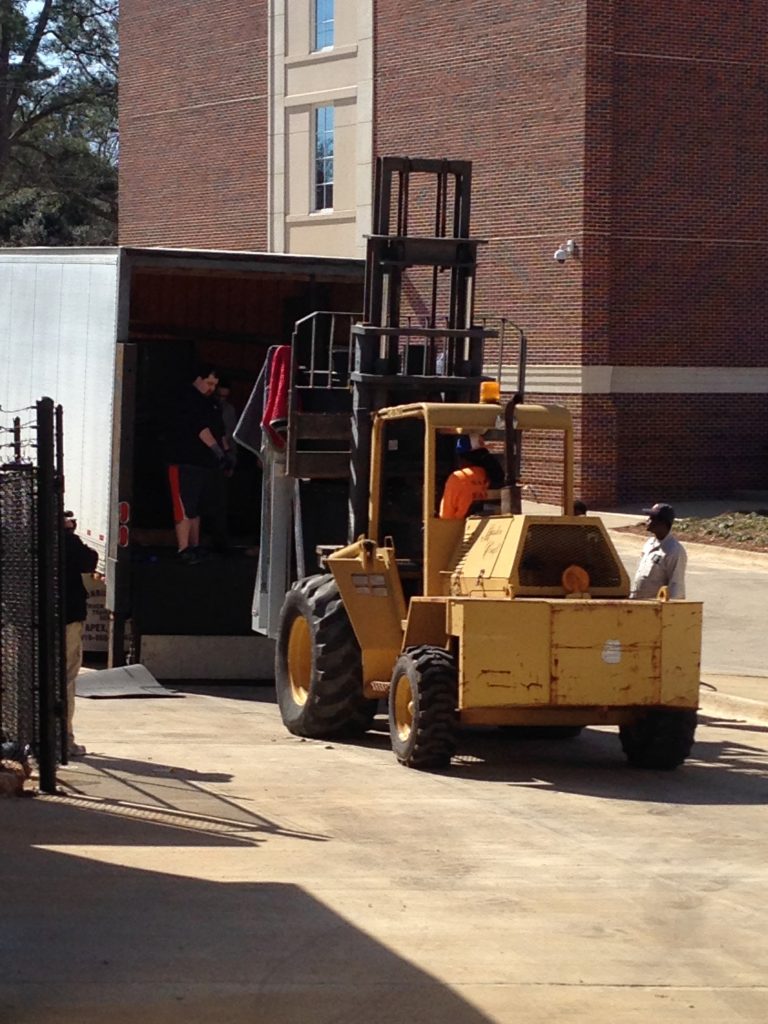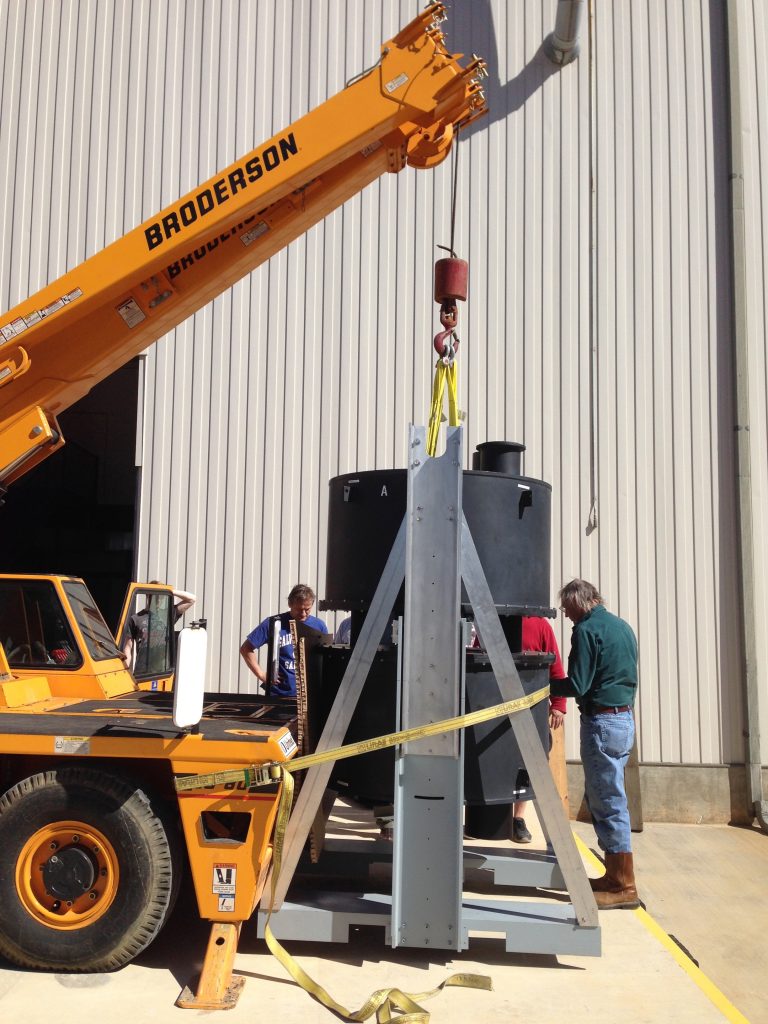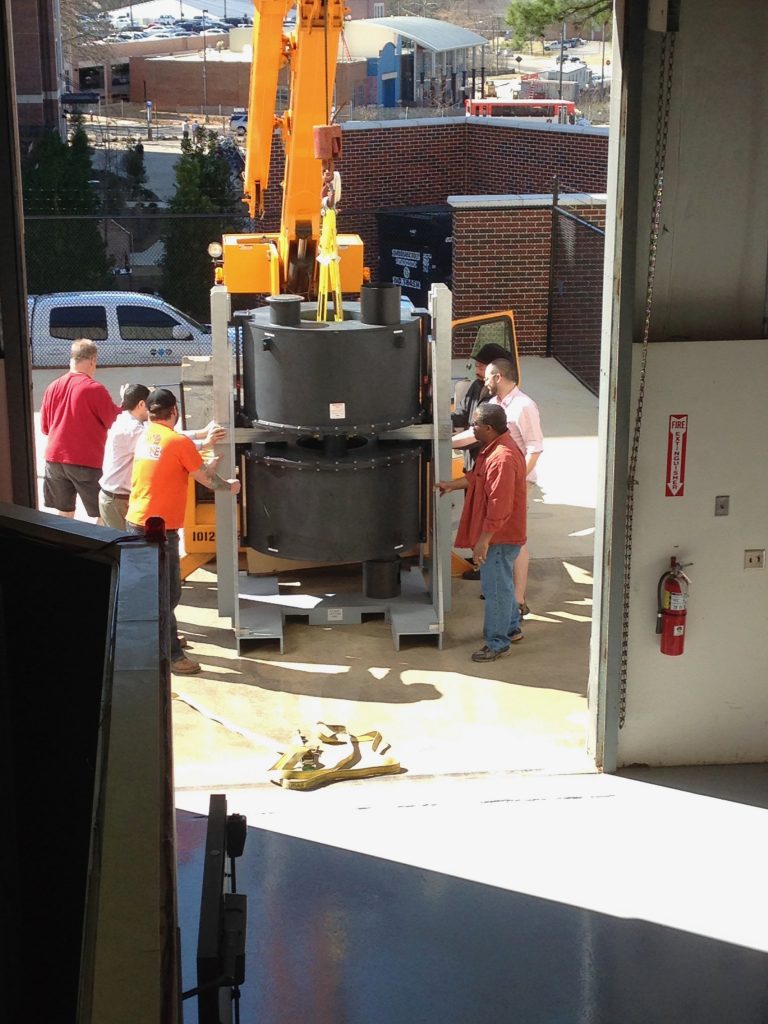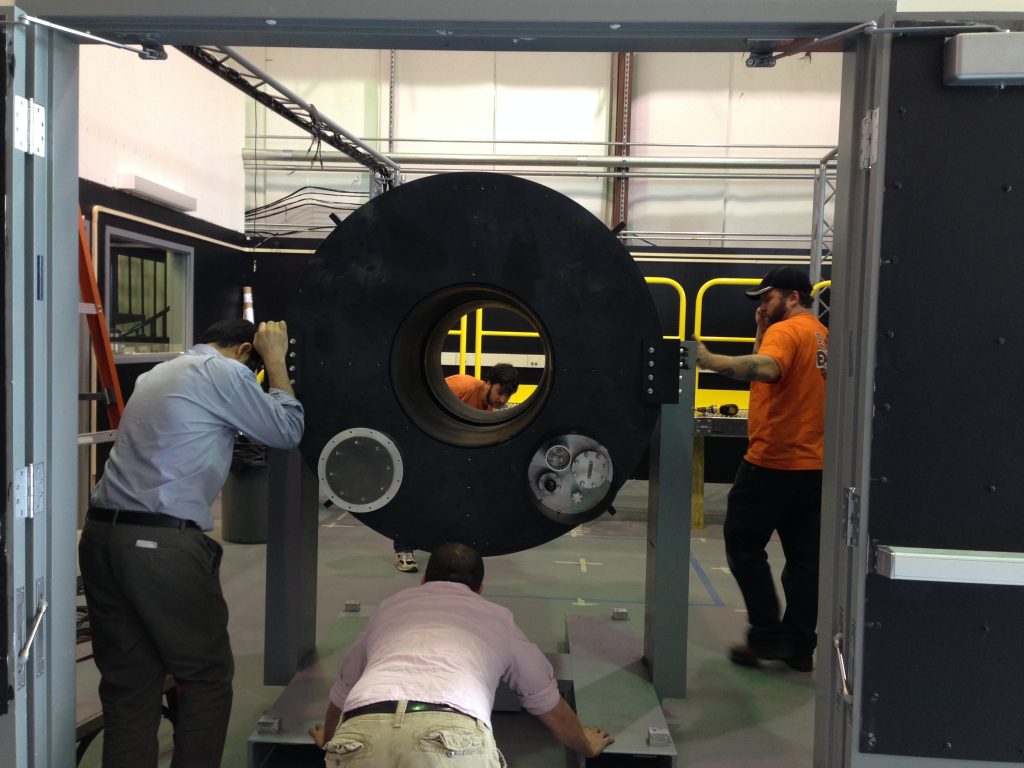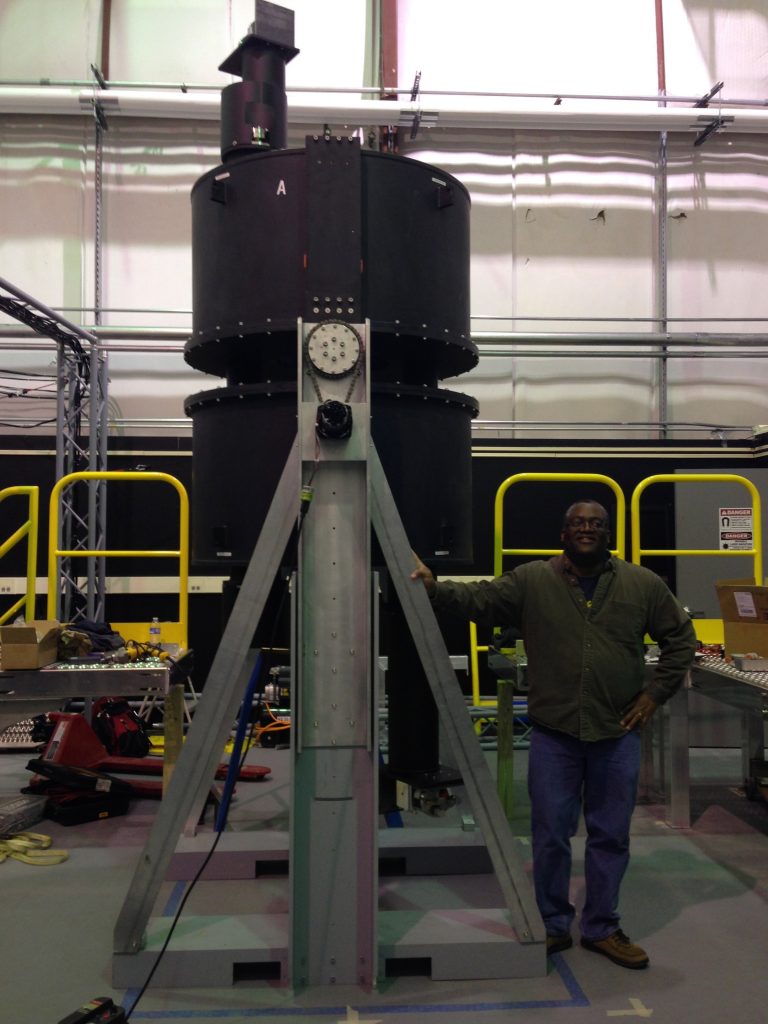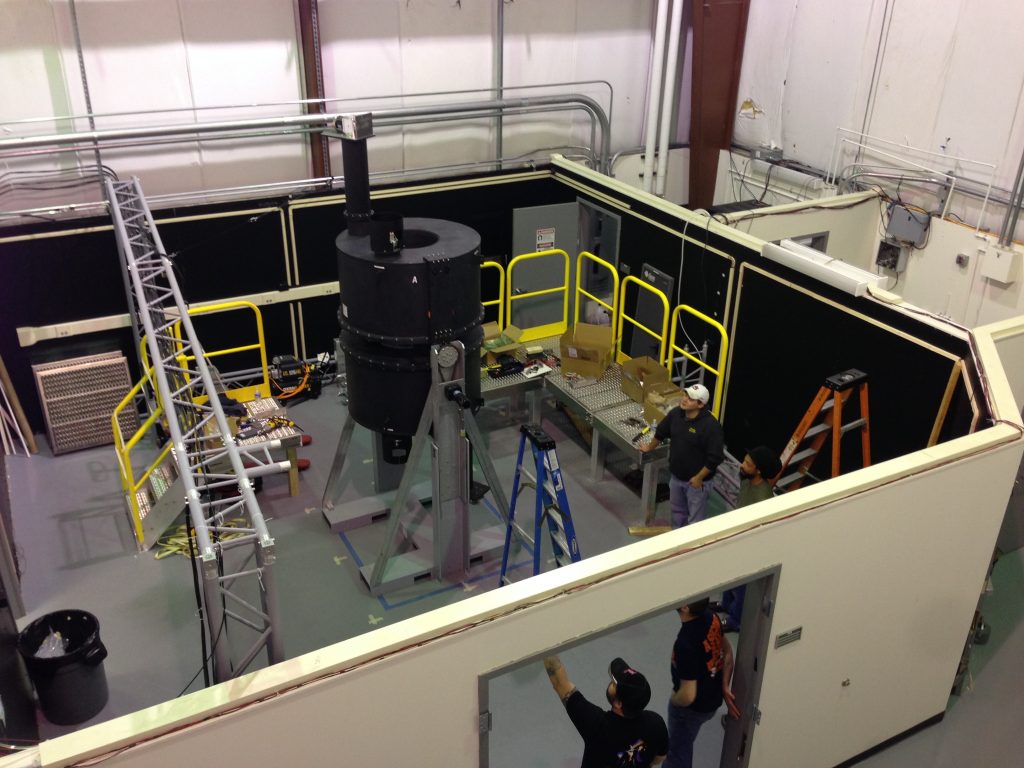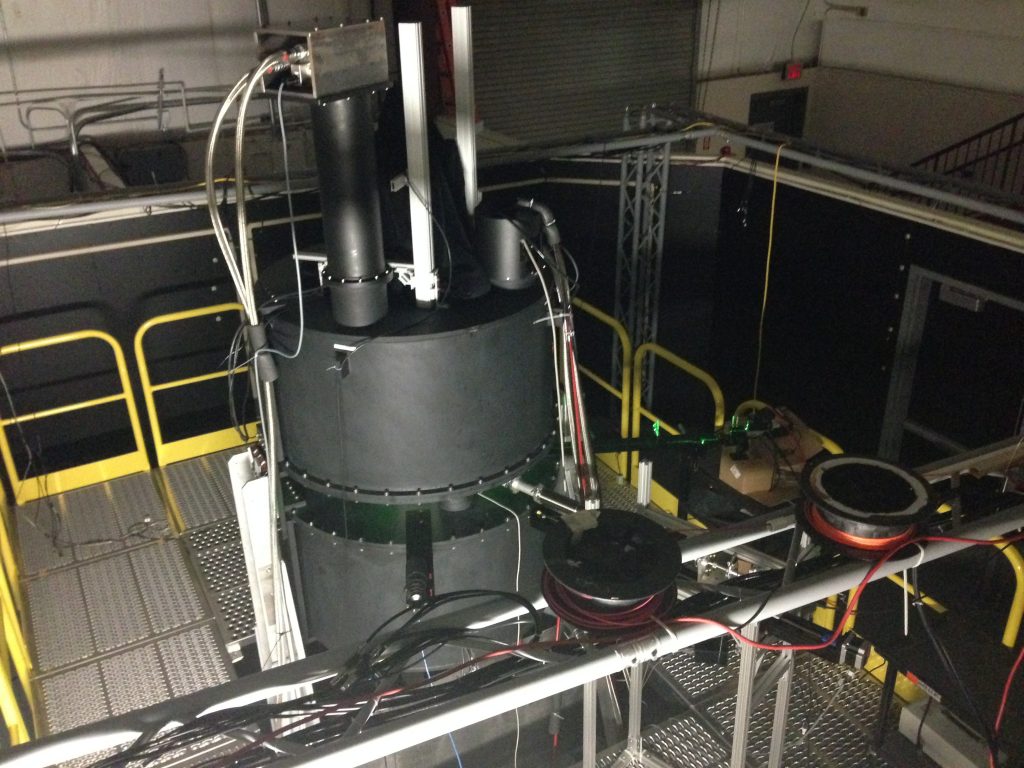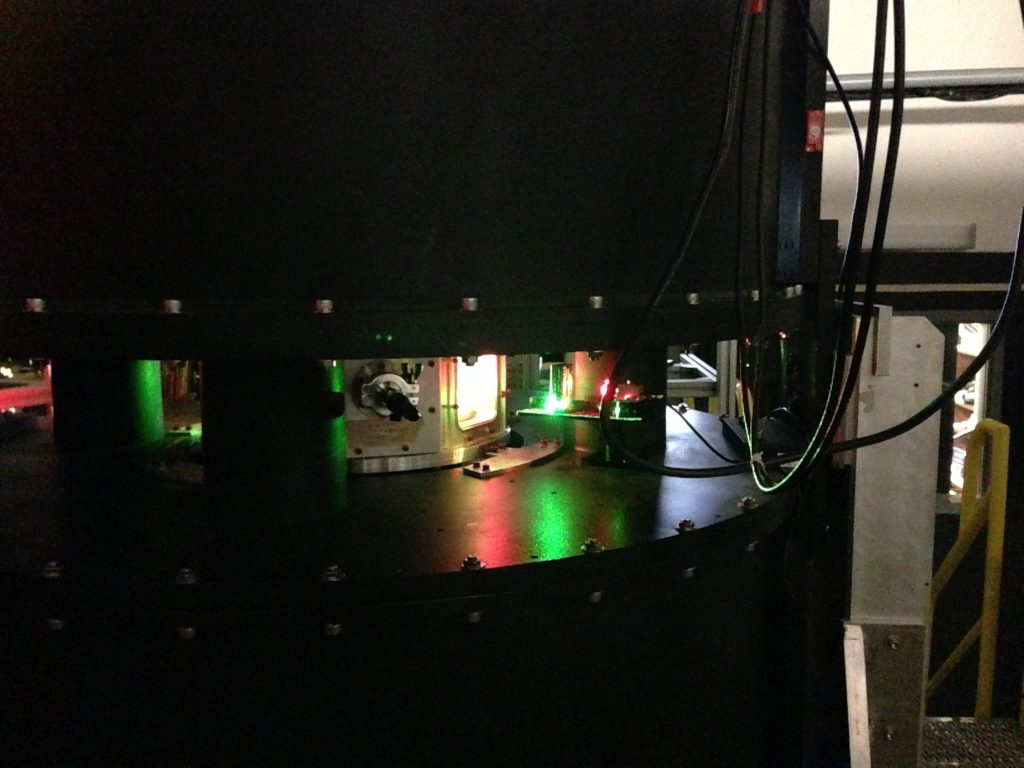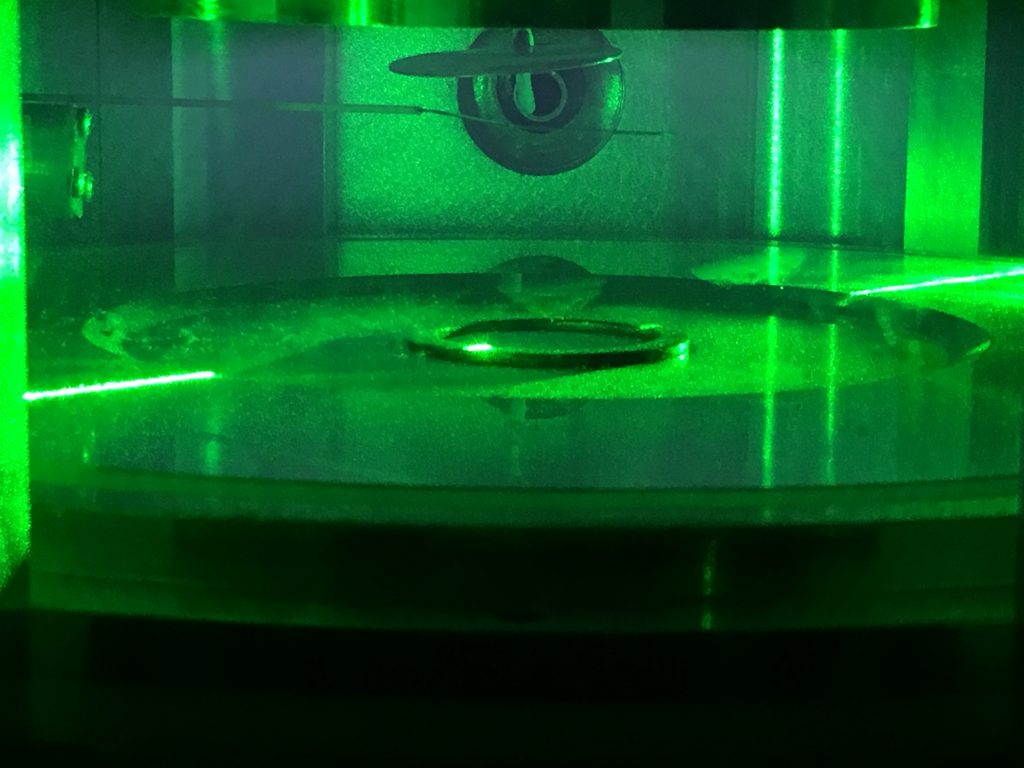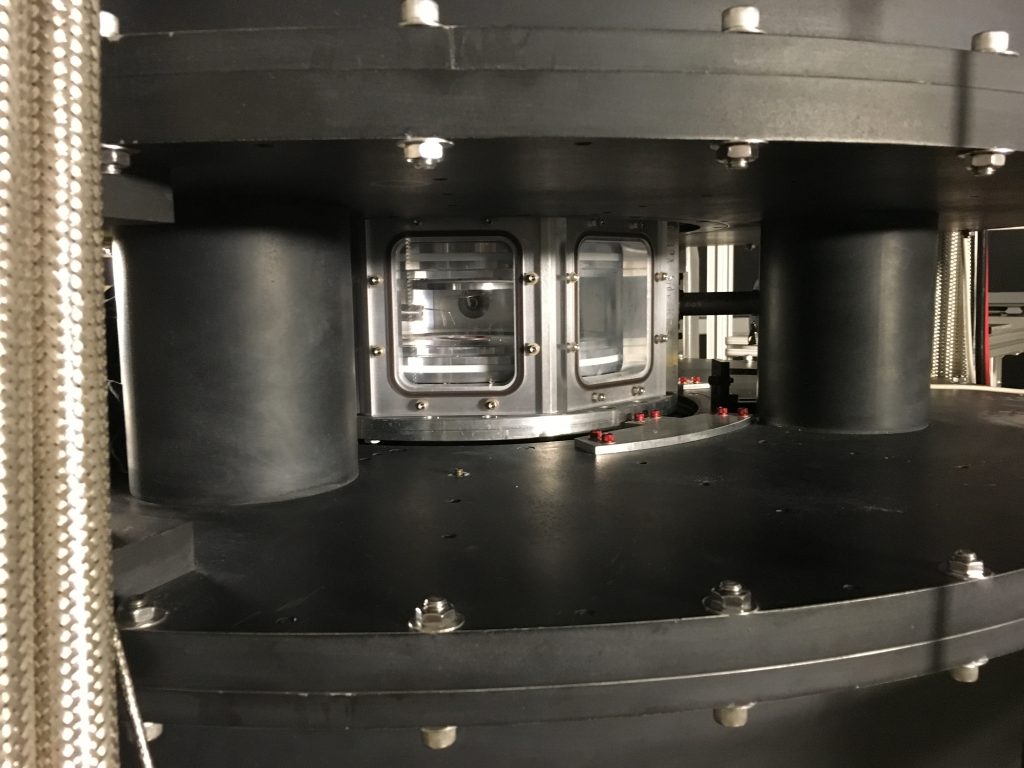The Magnetized Dusty Plasma research project is based at Auburn University with co-PIs at the Univeristy of Iowa and University of California – San Diego and collaborators / partners at universities, national laboratories, and research institutes in the US and around the world.
Current Status:
The MDPX device is operational. We are currently conducting studies on several topics:
- Magnetization and charging of microparticles
- Formation of imposed, ordered structures
- Void and sheath structures in magnetized plasmas
- Modification of dusty plasma waves in strongly magnetized plasmas
- Particle growth in magnetized plasmas
- Optical diagnostic development for magnetized plasmas and dusty plasmas
MDPX project goals:
- Develop a fully magnetized dusty plasma system
- Develop flexible, multi-configuration magnetic geometry
- Operate as a multi-user facility
Two primary scientific questions:
- As a plasma becomes magnetized (ie., where the dynamics of the electrons, then the ions, and finally the charged micro particle are controlled by the magnetic field – how do the structural, thermal, charging, and collective properties of the system evolve?
- If a dusty plasma has magnetic particles (e.g., paramagnetic, super-paramagnetic, or ferromagnetic particles) how does the system evolve in the presence of uniform and non-uniform magnetic fields?
Collaborations:
- The MDPX project is available for collaborative studies and we invite researchers and students to contact us about possible collaborations.
- Please review the MDPX – Technical Guide for detailed information on developing a collaborative experiment.
- Contact Prof. Edward Thomas for more information.
History:
In September, 2011, the AUPSL was awarded a National Science Foundation – Major Research Instrumentation (MRI) Award for the development of a novel, multi-user, superconducting, high-magnetic field device for the study of magnetized dusty plasmas. This work is an extension of the AUPSL ongoing research on dusty (complex) plasmas. This project is intended to be the leading research facility for the study of dusty (complex) plasmas.
In August, 2013, the AUPSL was awarded three-year funding from both Department of Energy and the National Science Foundation for the startup and operations of the Magnetized Dusty Plasma Experiment (MDPX).
The MDPX superconducting magnet system was delivered to Auburn University on February 24, 2014. Commissioning of the magnet took place between April and August, 2014.
In 2018, the MDPX laboratory received funding as part of the Department of Energy Plasma Science Facilities program.

